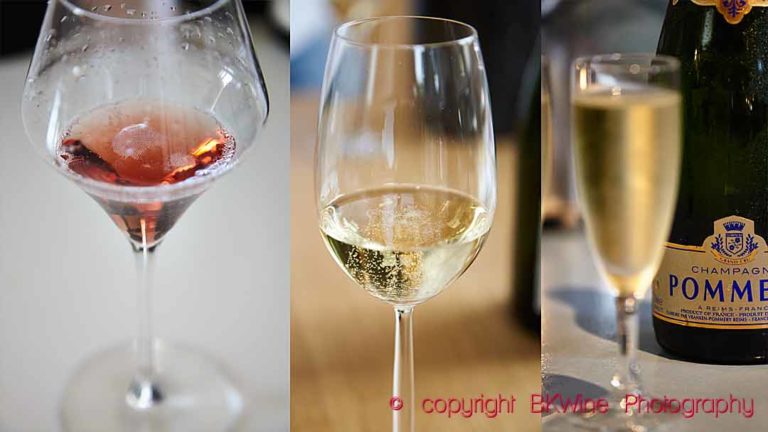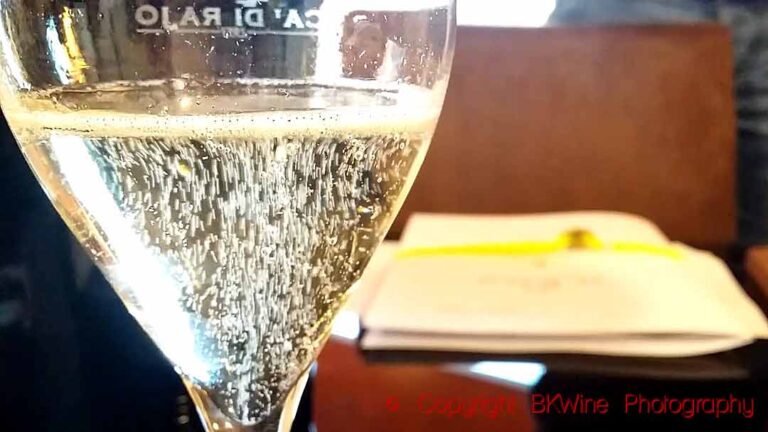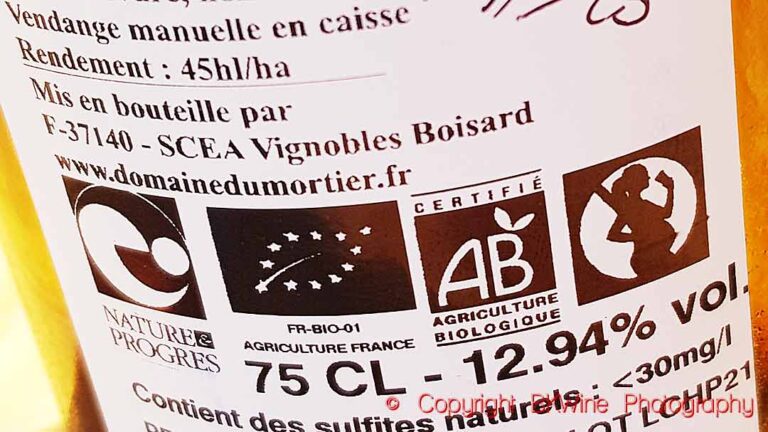The new book on champagne, the wine, and Champagne, the region, has now been launched! It’s called “Champagne, the wine and the growers“. It’s our ninth wine book. It’s a different book about Champagne, in some ways quite unique.
“Champagne, the wine and the growers” is a book that gives the reader an unparalleled insight into this sparkling wine. The book tells you about the reality, the truth, of Champagne. Much of the book is based on all the meetings we have had with all the hundreds of wine producers we have visited. It is from a technical details point of view a rather unique book, that goes into details on this special wine, and a book that also talks about champagne today, based on current research and totally up to date, like few other texts.
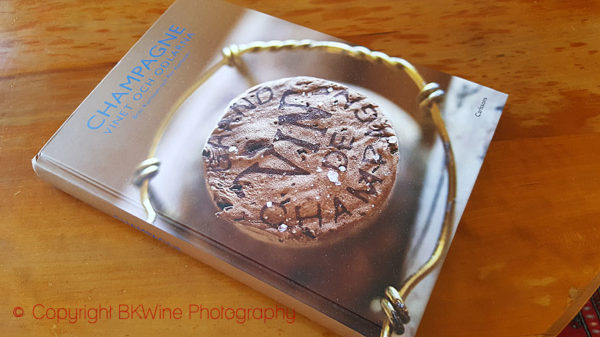
The book is also about all the independent producers that make growers’ champagnes, unlike the larger and more well-known branded champagnes from the famous “houses”. Growers’ champagnes are, in our opinion, perhaps the most personal, the most original, the most interesting champagnes. And they are also among the very, very best champagnes available, all categories included.
We hope that we will inspire you to discover more and more and different champagnes.
Here are more details and videos from the launch.
Around 160 people showed up for the launch!
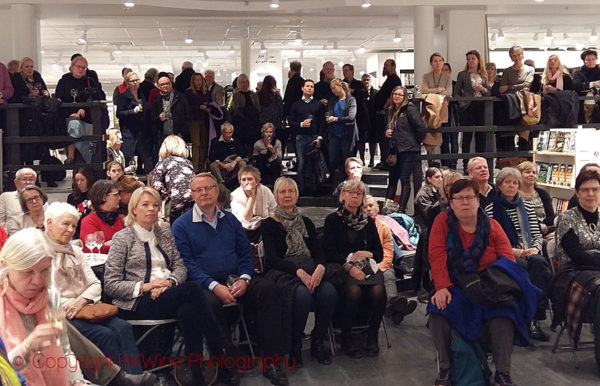
In English?
The book is currently only published in Swedish. We welcome enquiries about foreign language editions, English or other.
In fact, even internationally, there is not really any other book like it, with the details on how champagne is made and with a focus on the excellent growers’ champagnes.
Quick launch
In high speed, in a so-called time-lapse, this is how it was. But read more about the book – a little more seriously – and about what was said at the launch below, including videos from the event.
A closer look
Here’s a closer look on the book, inside and outside.
Trygve Carlsson, publisher, presents the book and the authors
(The video is in Swedish but you can read an excerpt in English below.)
“Two wonderfully knowledgeable authors, who lives from wine, in wine and through wine. I have rarely met writers who are so consistent in their approach. They always work with wine. They run tours with wine, they taste wine, and then they write great books. The Champagne book is the fourth in this series. As a publisher I think this is a kind of books that is congenial through its contents. They are not inflated. There’s no loose talk, instead it (or they) gives you extremely concentrated knowledge.”
“Britt’s and Per’s specialty is that they visit winegrowers and winemakers. Tirelessly, they travel not just around France, but also to many other countries in Europe and beyond. In these books the growers will always heard. They often have their own philosophy. There are very definite views about wine.”
“The first book in the series is called The creation of a wine. It was named the World’s Best Wine Book when it came out in the first edition.”
“The second book is called Biodynamic, Organic, and Natural Winemaking, a thorough book that explains what organic, biodynamic, natural and other types of wine really means.”
“The third book is called France, the Country of Wine.”
“All are based on the same concept, talking to the growers. There is a lot of information, and a lot of real hard facts. ”
“This new book presents not the ‘big’ houses, but instead focuses on many of the others, smaller independent growers that one may not often see elsewhere.”
Britt Karlsson, author, presents the book and a few champagnes
(The video is in Swedish but you can read an excerpt in English below.)
“It’s a hard life we live, as Trygve says. With wine, in wine. But we fill many spittoons too. We have tasted many champagnes over the one and a half years it took us to write the book. It has perhaps been the most fun book to write. Because I love champagne.”
“The idea we had with the book was to show what the smaller growers and producers do in Champagne. The area is known for its large and well-known ‘houses’, that certainly make good champagne. But, as one grower said, ‘there are many very good, technically correct champagnes, but that are maybe a little streamlined. Champagne suitable for cocktail parties and similar.’ A lot of champagne is drunk at parties and other events. There you might not need very exciting champagnes.”
“What we were looking for was on the contrary these exciting champagnes, the ones that bring something behind and beyond the bubbles. The bubbles are amazing and give a freshness that still wines don’t have. The bubbles provide an extra dimension.”
“But there are champagnes that are interesting in a completely different way, like a still wine. When we sat down with the growers and tasted their wines it was sometimes as if the bubbles were secondary. There was so much amazing character behind the bubbles. This is what we wanted, champagnes with great personality, with character. Then we are far from those streamlined champagnes.”
“With the book we want to show what you can achieve if you’re an ambitious champagne grower, when you are a producer who stops a little bit and think, when making champagne, when you make an extra effort in the vineyard, care about the environment, reduces the yields.”
“Champagne has a long and complex winemaking process; if you do the right things all they way through then the result will be terrific.”
Some examples of excellent growers’ champagnes
“We have some champagnes here tonight, that sponsors have kindly donated to us for the book launch. All are, of course, in the book.”
“Thank you to the sponsors!”
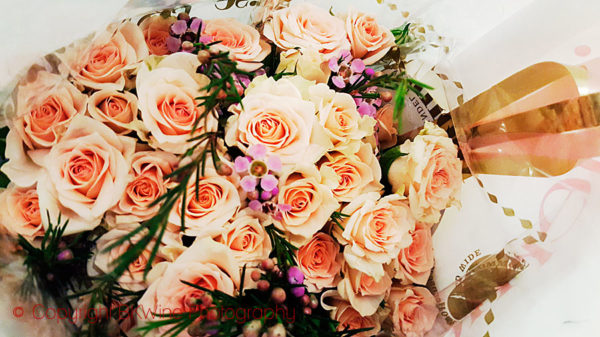
“Champagne Fleury, in the Côte des Bar (Aube), the southern part of the Champagne 150 kilometres south, almost in Burgundy. The district is known for its pinot noir. Fleury is a family company, a pioneer of biodynamic farming. The acidity is, for them, perhaps the most important element. Champagne should have a high acidity and their way of growing, organic and biodynamic, gives a particularly good acidity, they say.”
“Champagne Thierry Perrion from Verzenay in the Montagne de Reims. They have a miniscule property of 2 hectares, that as a family you can actually live from in Champagne. Their vines grow only in this village, so the character of the wine truly reflects the terroir of that particular village.”
“Champagne Eric Rodez, in Ambonnay, also in the Montagne de Reims, is represented with a blanc de noir. He is something of a philosopher, he has big blue spectacles, and he talks about the importance of ‘energy’ in the grapes. He also works with aromatherapy in the vineyard. The result is amazing.”
“Champagne Doyard-Mahé, far down in the Côte des Blancs. It’s Carole, the daughter in the family, who is the winemaker. Her champagnes taste a little bit as she looks. She’s tall, blond, slender and elegant, and her champagne is also elegant and slender. Very elegant, just as a 100% chardonnay should be ”
“Champagne Penet-Chardonnet, in the Montagne de Reims. Alexandre Penet is in Verzy. His pet peeve is to make as dry champagnes as possible, with very little dosage. Extra-brut or drier. He does not want to mask the taste with a lot of sugar.”
“Champagne Diebolt-Vallois, a very popular champagne in Sweden, is in Cramant in the Côte des Blancs. They also have a female winemaker. She is very inspired by Burgundy. There are indeed many in Champagne today who say that they are inspired by Burgundy. Champagne is not very far from Burgundy. People are becoming more and more interested in Champagne in letting the soil get expression in the wine, just as in Burgundy. They keep all the different plots separate in the winery sot that each wine can get exactly the right treatment. ”
“I hope that you will enjoy the book. And that you will soon want to travel to Champagne!”
(On one of our wine tours, of course!)
Per Karlsson, photographer and co-author, with more on the book
(The video is in Swedish but you can read an excerpt in English below.)
“Trygve told you that when we write books, we are not much into babble, but in this case we are very much into bubbles…”
“Firstly, thank you Trygve and Carlsson Publishing. It’s good to work with Trygve, who wants to make ambitious books, the kind of books that we also think are fun. Books weighing in at more than one kilogram… 1076 grams in this case. Thank you for to the five books that we’ve done together. Number six is in the pipeline.”
“Thanks also to Petter (Antonisen) and Lena (Karlsson) who made the design and ensured that they look so nice. It is always an inspiration to talk to Petter. The book contains around 200 pictures. I started from the approximately 8,000 images that I have from Champagne. It is sometimes a little blinding (the trees and the forest…) and you get a little bit worn when working with them. Then it’s fun to talk with Petter who might say, for example, ‘Oh, that is a fantastic image’. Then you think that, yes, perhaps they aren’t that bad those photos after all.”
“Now, to the book. The book tells the story about the reality of Champagne. Very much, almost everything, is based on all the meetings we had with the producers in Champagne. Hundreds of winemakers. Thanks to all this the book has some very detailed information about what makes champagne champagne, what it is that makes it taste like it does. One can almost say that this is, from a facts contents point of view, a rather unique book. One that also tells you about champagne of today, completely up to date with recent information.”
“But the story we tell about champagne starts the words from all the people we met. So it is also a book that is not only ‘facts’ but also a very personal story, a personal story about all the producers we met. About the producers who make ‘growers’ champagnes’, the independent winemakers.”
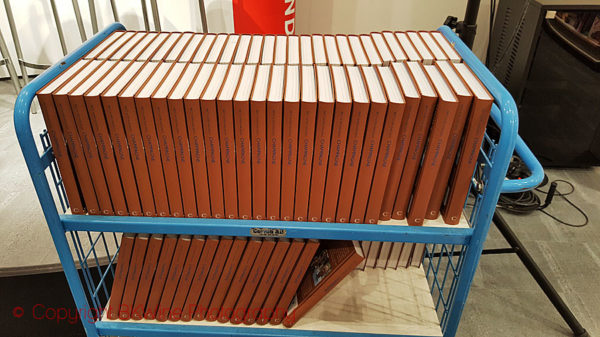
“This is those who, in our view, make perhaps the most personal, the most original, the most interesting champagnes, in many ways. But not only original but also high-quality, among the very, very best champagnes available, all categories.”
“We hope that the book will inspire you, the reader, to discover more champagne, discover new champagnes. Wine is for us, and perhaps for many others who are interested in wine, about discovering things, new things, different things. It is not so much about finding the ‘best’ wine which you then drink every week. It’s more about exploring new, travel to a new place, find a new champagne producer.”
“Half the book is about the producers, producer profiles, on who they are and how they work. The stories of how they work is interesting, in fact, important, so in order to understand the complexity of champagne you have to actually read both the first part on how champagne is made and the second part with the producers and what they say about how they work.”
“One producer might say ‘I certainly do not want to make malolactic fermentation because then you get wines that cannot be aged.’ The second then says ‘you must definitely make the malolactic fermentation, otherwise you cannot age the wine’, the direct opposite. And both make great champagnes. Just one of many examples. You can never figure it out completely. You have to taste and see what you think for yourself. What you like.”
“We have about a hundred producers in the book. So what we may perhaps inspire is to launch a personal champagne project. Your personal champagne project: Set a goal to taste one new champagne producer each week. Then you tick them off in the book every week, one by one. One new every week. The point is that we have a hundred producers in the book so this will keep you busy for two years! And after that, then you know all about champagne. ”
“Thank you all for being here!”
Questions and answers about the new book on champagne
(The video is in Swedish but you can read an excerpt in English below.)
The book launch ended with questions and answers about champagne and the book (some of them answered in the book).
- Is it possible to combine champagne with food?
- Champagne with marinated herring? Or pig’s trotters?
- Can you drink Champagne all through a meal?
- What about the malolactic fermentation? Is it going up or down?
- Is Champagne more and more influenced by Burgundy?
- Perhaps the malolactic fermentation has to do with whether you drink champagne to food?
- Is there something called wine-anthropology?
- And what will the next book be about?
Buy the book Champagne, the Wine and the Growers!
And travel with us on a wine tour to Champagne, if you really want to get up close and personal with champagne and learn more. And also enjoy lots of good champagne and excellent food. Can you get better cicerones to Champagne?


